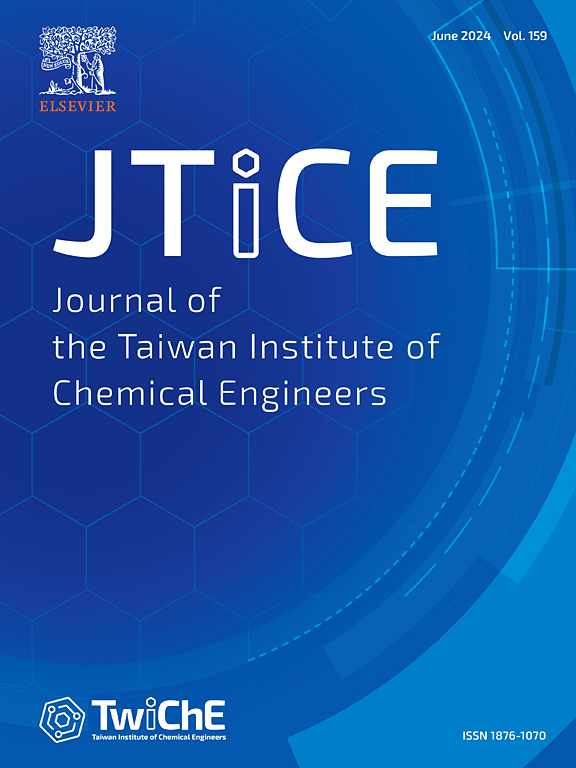Machine learning predicts properties of hydrochar derived from digestate
IF 5.5
3区 工程技术
Q1 ENGINEERING, CHEMICAL
Journal of the Taiwan Institute of Chemical Engineers
Pub Date : 2025-02-01
DOI:10.1016/j.jtice.2024.105862
引用次数: 0
Abstract
Background
Hydrothermal carbonization (HTC) is a promising solution for digestate valorization, and machine learning (ML) is a helpful tool for modeling hydrochar properties.
Methods
This study utilized two ensemble tree-based ML algorithms, the random forest (RF) and the eXtreme Gradient Boosting (XGB), for predicting digestate-derived hydrochar yield, properties (Cc, Hc Nc, Oc, Sc, Ashc, HHVc), and HTC process index including energy yield (EY), energy densification (ED), and carbon recovery (CR).
Significant Findings
In most cases, XGB showed better predictive performance, including yield, Cc, Hc, Nc, Ashc, HHVc, EY, and ED prediction, while RF revealed better performance in Oc, Sc, and CR prediction. XGB and RF showed satisfactory performance in predicting Cc, Hc, Oc, Sc, Ashc, and HHVc, with test R2 of 0.856–0.942 and 0.864–0.947, respectively. The multi-task model for predicting yield and hydrochar properties (Cc, Hc, Nc, Oc, Sc, Ashc, HHVc) was also developed. XGB reveals better performance than RF, with the average test R2 of XGB could achieve 0.895, which is comparable to the current published work. The SHapley Additive exPlanations (SHAP) analysis reveals that digestate ash content, C content, and HTC temperature (T) dominate multi-task predictions. The chain regressor technique enhanced the model performance toward multi-task prediction, including EY, ED, and CR: in RF, the test R2 of ED and CR were increased by 38 % and 26 %, respectively, while in XGB, the test R2 of ED was improved by 48 %. The developed ML model in this work could satisfactorily predict hydrochar properties, forming a basis for optimizing HTC process parameters and determining suitable applications for digestate valorization. ML effectively maps the correlation between input features and output responses, making ML a time-efficient and practicable tool for prediction tasks and identifying essential features, especially for multi-output prediction with high-dimension.

求助全文
约1分钟内获得全文
求助全文
来源期刊
CiteScore
9.10
自引率
14.00%
发文量
362
审稿时长
35 days
期刊介绍:
Journal of the Taiwan Institute of Chemical Engineers (formerly known as Journal of the Chinese Institute of Chemical Engineers) publishes original works, from fundamental principles to practical applications, in the broad field of chemical engineering with special focus on three aspects: Chemical and Biomolecular Science and Technology, Energy and Environmental Science and Technology, and Materials Science and Technology. Authors should choose for their manuscript an appropriate aspect section and a few related classifications when submitting to the journal online.

 求助内容:
求助内容: 应助结果提醒方式:
应助结果提醒方式:


